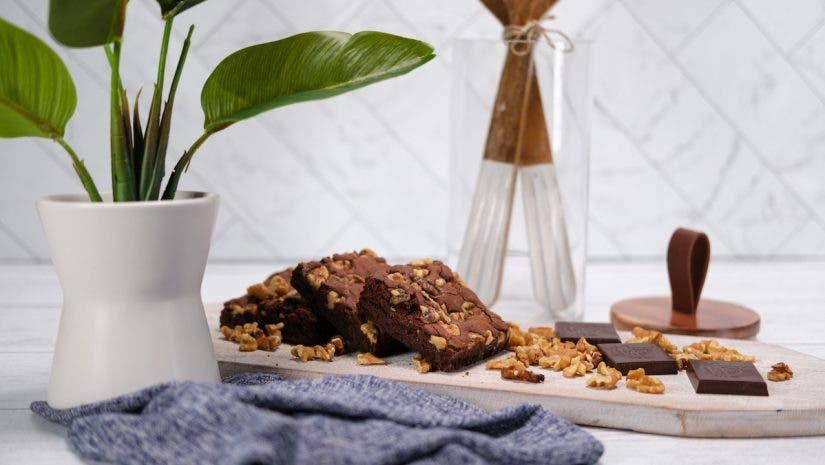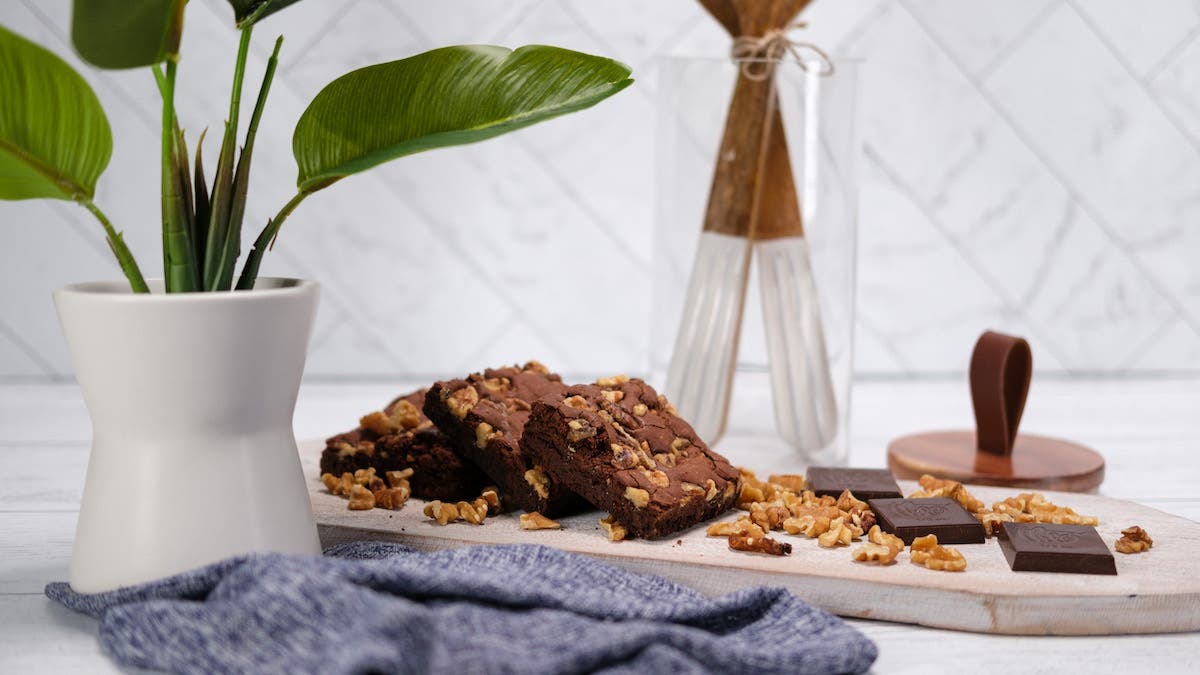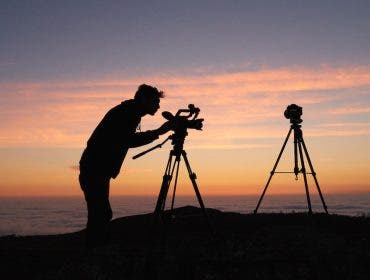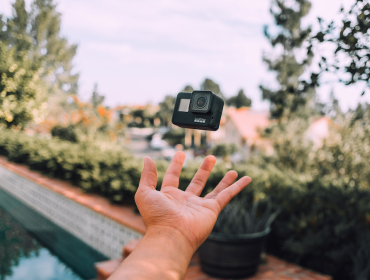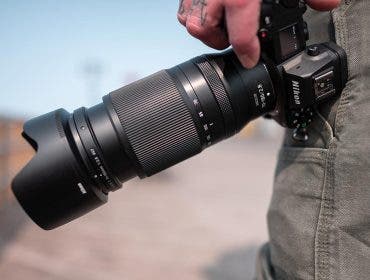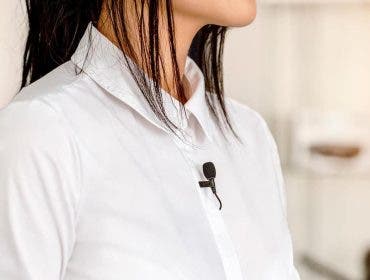There are many elements to consider if you’re a culinary artist or photographer looking to capture mouthwatering images of food. Everything from the way you arrange your props, to the colors of your ingredients, and the position of your lighting can impact the visual appeal of your food photography. With so many details to consider, it’s important that you deliberate to find the best food backgrounds, backdrops, and surfaces to create your food photography.
Food Backgrounds vs Backdrops vs Surfaces
It might be convenient to think of the terms background, backdrop, and surface as different words for the same thing. Although, they have to be considered within the correct context. You’ll be able to have more control over how you create compelling food photography once you have a good understanding of how each of these elements impact your final images.
Backgrounds
A background in food photography simply refers to what is behind your dish or subject. Choosing a background is usually done in conjunction with the food, aesthetic, or style that you’re wanting to create when capturing images of your culinary creations. It can be anything from a wall, to a prop, to even a piece of fabric.
Backdrops
Similar to a background, a food photography backdrop is also placed behind your dish for visual and aesthetic impact. It can be paper, vinyl, or even a solid or textured panel. Food photography backdrops come in a variety of materials. This includes real wood, stone panels, ceramic tiles, or printed realistic textures on replicated panels, like the Duo Boards from V-Flat World.
Their primary purpose is to eliminate any distracting elements in the background of your images. They can also create a distinct look for the stylistic effect that you’re looking to create.
Surfaces
A food photography surface is typically the plate, backdrop, surface, or other primary touch-point that you place your dish on. Choosing the best surface for the type of food that you’re photographing will always depend on the dish itself, in addition to the visual style that you’re wanting to convey.
You may want to place a steak on a rustic butcher block to convey an appealing cut at the deli, or on a high-end porcelain plate with an elaborate set of silverware. Whatever your end-goal, you’ll find a plethora of options for food photography surfaces to choose from.
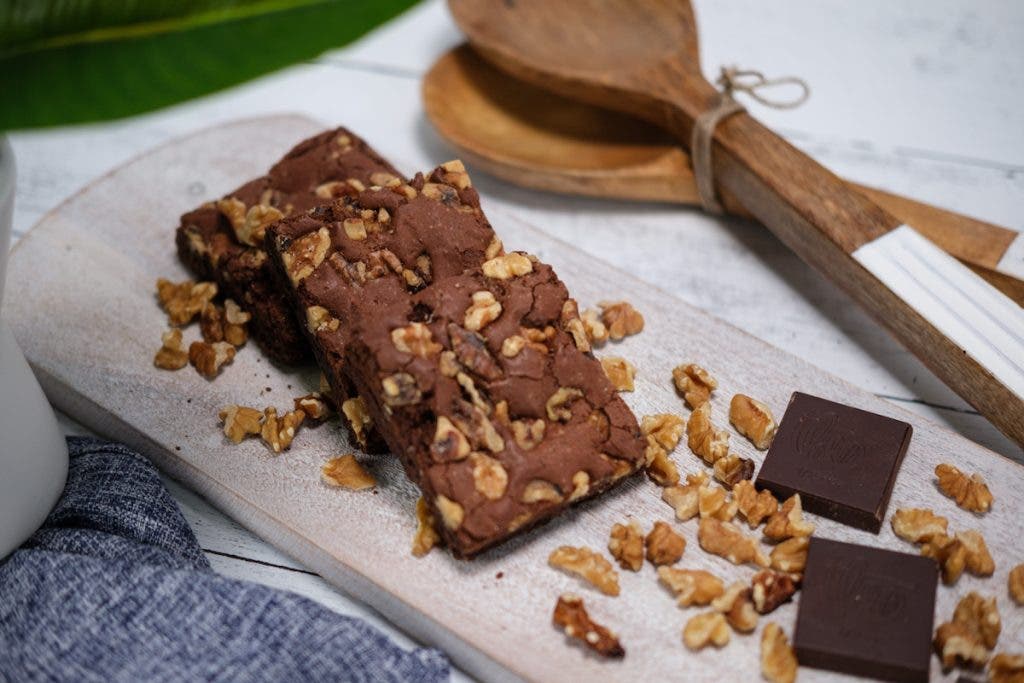
Types of Photography Backdrops
There are a wide variety of photography backdrops for food photography. Each of them have their own advantages and drawbacks. Let’s take a look at some of the most popular options, and consider their pros and cons.
Fabric
Fabrics are versatile backdrops for food photography. They’re lightweight, affordable, and available in a large variety of colors and textures. You can find an endless palette of fabrics at your local textile shop for your next food photography shoot. Although, prepare to iron out any wrinkles, wash out any stains from your previous shoot, or deal with unexpected tears in the fabrics from handling.
Seamless Paper
Some of my favorite food photography backdrops are the high quality seamless papers from Savage Universal. They’re available in a large number of color and sizes. These are perfect for creating a clean and colorful look for your food photography. Despite being affordable and easy to use, they don’t offer any texture since they’re made of smooth paper. They can also tear and crease with extended use, needing to be replaced when damaged.
Vinyl
Vinyl backdrops are some of the most durable backdrops for food photography. They’re very resistant to the rigors of food photography. They can withstand getting wet, don’t tear easily, and are available in a variety of textures. They’re easy to clean, but can sometimes create unwanted reflections, be cumbersome to travel with, and don’t pack down as easily as fabric or rolls of paper.
Muslin
Muslin food photography backdrops are popular thanks to being made from lightweight cotton fabrics. They offer soft and nuanced textures that create unique looks for your food photos, and are lightweight and compact for travel. The biggest challenge with muslin backdrops is keeping them wrinkle-free. You’ll want to keep an iron or steamer handy to ensure that your muslin is always smooth and provides a clean backdrop for your food photography.
Canvas
Canvas backdrops offer a rustic aesthetic for your food photography. The organic nature of canvas adds a texture that is unique. It gives a natural and organic depth to your food photography. Canvas backdrops are also very durable, and can be used extensively without easily tearing. They can, however, be somewhat bulky and difficult to clean. They are inherently less versatile than other backdrops since there is a limited number of colors and textures.
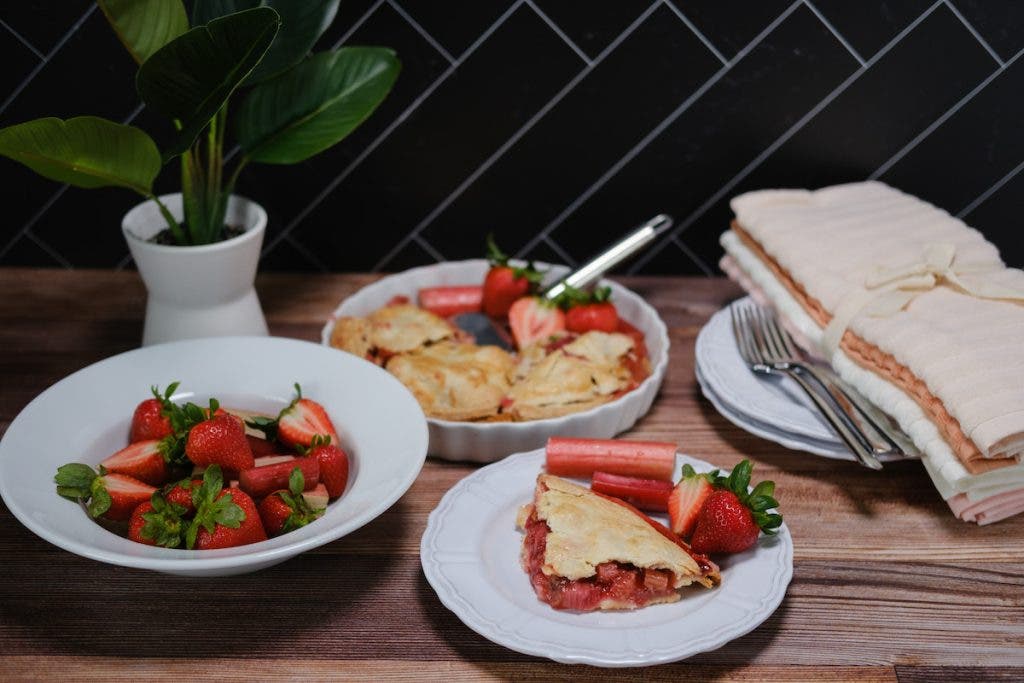
Other Backdrop Options
Creating compelling food photography using household items that you already have accessible is another quick and easy way to get started. Lets look at some common everyday household items that you can use as photography backdrops. Consider why they may or may not be a good fit to use as a food photography backdrop.
Wood Table
Using your wooden dining table as a food photography backdrop or surface is a great option for creating tantalizing images. Wood adds a rustic look and feel to your images. It also comes in a large variety of varnishes, textures, and patterns. Try to make the most of using your wood tables at home for food photography. Keep in mind that they may limit your creative options by adding unwanted glare or showing wear and tear that may not fit your overall aesthetic. It can also impact your color palettes if the finish doesn’t match the look that you’re wanting to create.
Metal Table
Metal tables are another option for a food photography backdrop. Depending on the type of metal, paint color, or finish, a metal table can create a sophisticated or contemporary look to your food photography. They’re mostly reflective surfaces, which can add to or detract from your desired aesthetic. Be sure to consider how the surface is impacting the look of your images with the reflections that it’s creating.
Parchment Paper
Parchment paper is a translucent material that can be used as a smooth and clean backdrop for food photography. The lack of texture and color allows your food to stand out in your images, but can also be somewhat bland. It’s very cheap and easy to use, but is also typically limited in size and shape, making it not as useful for shoots that require a larger sized backdrop.
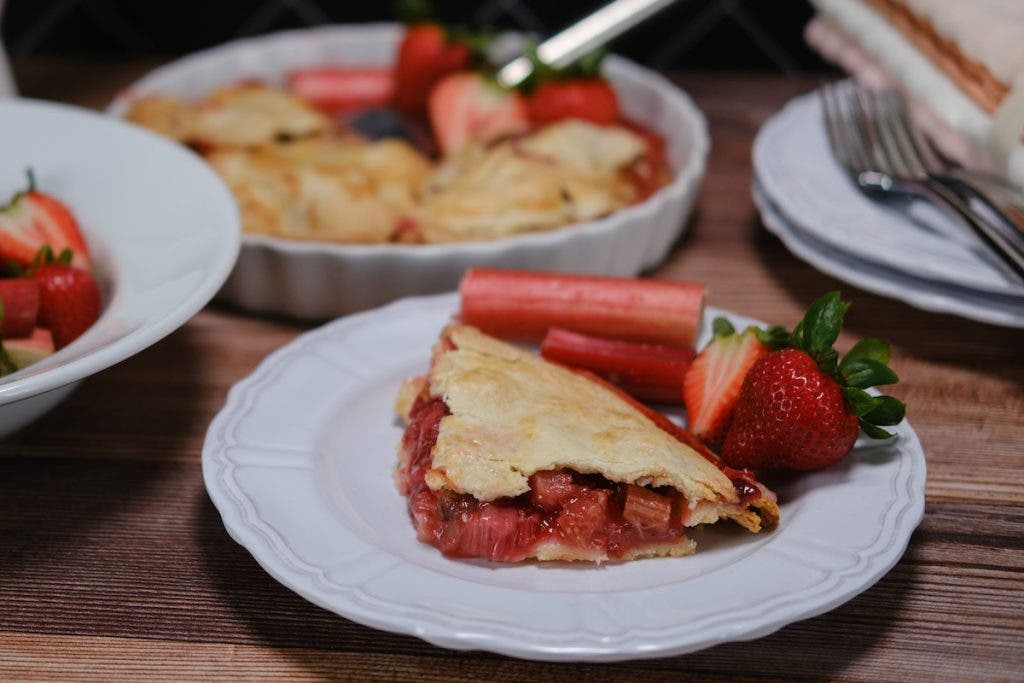
Cutting Board
Cutting boards come in all kinds of sizes, shapes, and materials, making them a compelling and accessible household item as a food photography backdrop. Using rustic and well-worn wooden cutting boards can add an authentic look to your food photos. Cutting boards are usually easy to use and are also great for use as props. They are, however, limited due to their size and can become unsightly with extended use and staining from food and cooking.
Kitchen Linen
Kitchen linens offer a colorful and versatile option for use as a food photography backdrop since they’re made from a variety of colors, patterns, materials, and sizes. I love using them as props, because they’re great for adding a pop of color and texture. They can easily be shaped and draped to create the perfect angles and compositions, and are very affordable and easy to replace. As with parchment paper, they are limited in their size. This may not be ideal for shoots where you need a large and uniform backdrop to achieve a specific look.
How to Choose a Food Photography Setting
Creating food photography is a culmination of many choices and factors that come together to produce appetizing images. Deciding on the type of materials to use, ideal color palettes for your recipes, and best size of props and backdrops can all impact the outcome of your final images.
Texture
When it comes to the choice of materials for your backdrops and surfaces, consider how the texture of the material you’re choosing will impact your images. You’ll want to give some thought to how the material you’ve chosen will impact a number of factors in your food photos.
Are you looking to avoid glare and reflections? Do you need to be able to get your backdrop wet and covered in ingredients? Do you want to have a portable and easy to use material? All of these questions are important to ask yourself prior to planning your food photography shoot. Depending on your goals, you may find that a certain material may be a better fit for your needs. Be sure to consider your choice of material during the pre-planning stage for your shoot.
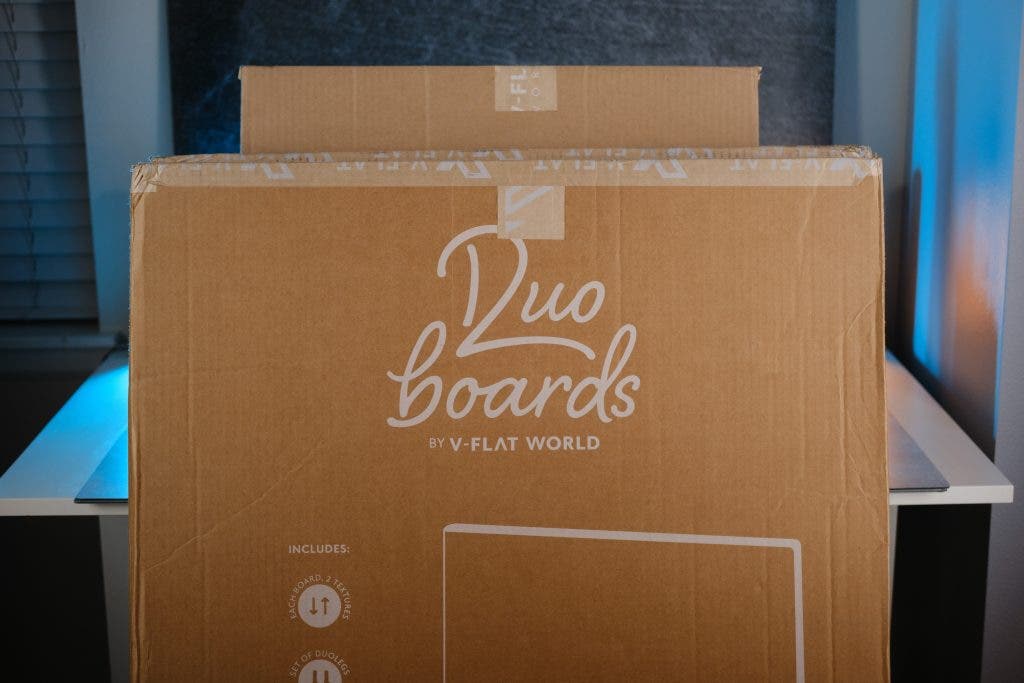
I personally love using Duo Boards from V-FLat World, as they have a wide selection of colors, textures, and sizes. The boards themselves are printed with high-resolution vinyl, making them durable and easy to clean after my shoots. They come in two sizes, so you can decide if you want a wide or tight composition. They can be used for other types of photography as well, like taking photos of products.
Having access to a large selection of textures and colors with my Duo Boards allows me to carefully plan out the overall look and feel of my food photography. I can be deliberate about choosing the perfect complementary colors and textures, and create any type of composition with large-sized surfaces that give me plenty of creative freedom.
Conclusion
Creating food photography is a fun and engaging way to practice creating compelling images. I personally enjoy planning all of the details for achieving the perfect aesthetic, and have a lot of fun while creating appetizing photos. The best part is that I can finish my photo shoot with a tasty reward and share the creation of delicious recipes.
